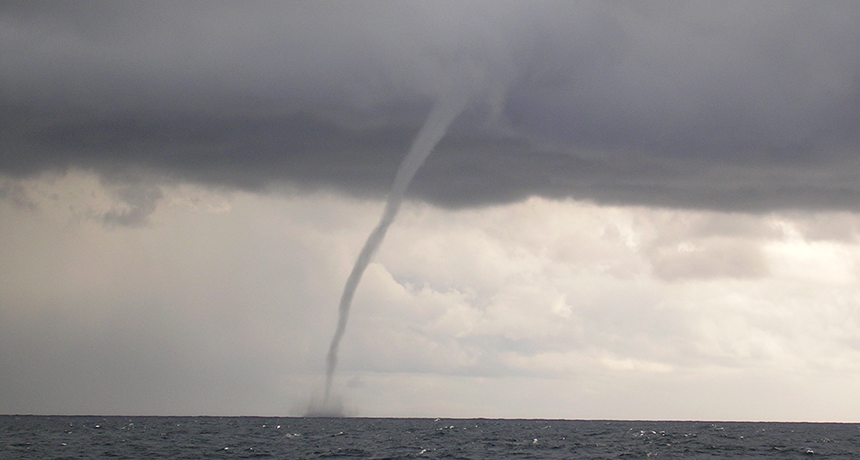blizzard An intense snowstorm that is accompanied by sustained winds (or frequent gusts) of 56.3 kilometers (35 miles) per hour and that lasts a minimum of three hours.
cloud A plume of molecules or particles, such as water droplets, that move under the action of an outside force, such as wind, radiation or water currents. (in atmospheric science) A mass of airborne water droplets and ice crystals that travel as a plume, usually high in Earth’s atmosphere. Its movement is driven by winds.
National Weather Service An agency of the National Oceanic and Atmospheric Administration. Created in 1870, its current role is to collect weather, precipitation and climate data. It also issues forecasts and warnings 24 hours a day for the entire United States, focusing on signs of possible conditions that could threaten lives and structures.
sea An ocean (or region that is part of an ocean). Unlike lakes and streams, seawater — or ocean water — is salty.
tornado A violently rotating column of air extending from the ground to a thunderstorm above.
waterspout A rotating whirlwind of misty air. These can form either of two ways. Some are true tornadoes that emerge from rotating clouds in a thunderstorm. These either form over water or travel from land to a nearby body of water. Another type can form on non-stormy days. Unlike tornadoes that come down from a cloud, these whirlwinds tend to form above water and then rise toward clouds. They tend to develop where winds are light and they travel little.
weather Conditions in the atmosphere at a localized place and a particular time. It is usually described in terms of particular features, such as air pressure, humidity, moisture, any precipitation (rain, snow or ice), temperature and wind speed. Weather constitutes the actual conditions that occur at any time and place. It’s different from climate, which is a description of the conditions that tend to occur in some general region during a particular month or season.

